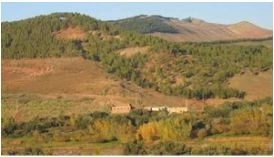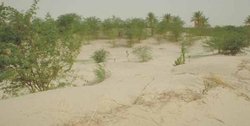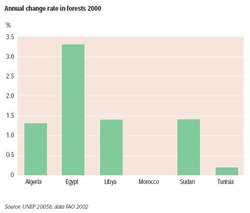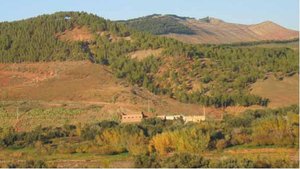Northern Africa and forests and woodlands
Contents
- 1 Introduction Northern Africa is characterized by desert conditions, limited water resources and an arid climate. Forests are not common in most of the six countries, except along the coast of the western Mediterranean Sea and in the tropical zone of southern Sudan. (Northern Africa and forests and woodlands)
- 2 Overview of resources Table 1: Forest cover as percentage of total land area in Northern Africa. (Source: FAO) The total forest area in Northern Africa is about 67 million ha and constitutes 8.3 percent of the total land area, which is about 10.4 percent of the total African forest cover. Closed forests occur on the coast of the western Mediterranean countries, in the Atlas Mountains and in southern Sudan. Other wooded areas occur as natural desert vegetation in sandy valleys (wadis) and depressions. Coastal and inland high mountains also support woody plants. Mangroves or tidal forests occupy small areas of the Red Sea coasts. Wetlands, with their hydrophilous reeds, and cultivated trees are important tree resources and provide various goods-and-services including timber, NTFPs, grazing and desertification (Northern Africa and forests and woodlands) control. The distribution of forests and the rate of forest cover change are shown in Table 1.
- 3 Opportunities provided by forests and woodlands
- 4 Challenges faced in realizing opportunities for development
- 5 Strategies to improve opportunities
- 6 Further reading
Introduction Northern Africa is characterized by desert conditions, limited water resources and an arid climate. Forests are not common in most of the six countries, except along the coast of the western Mediterranean Sea and in the tropical zone of southern Sudan. (Northern Africa and forests and woodlands)
Overview of resources Table 1: Forest cover as percentage of total land area in Northern Africa. (Source: FAO) The total forest area in Northern Africa is about 67 million ha and constitutes 8.3 percent of the total land area, which is about 10.4 percent of the total African forest cover. Closed forests occur on the coast of the western Mediterranean countries, in the Atlas Mountains and in southern Sudan. Other wooded areas occur as natural desert vegetation in sandy valleys (wadis) and depressions. Coastal and inland high mountains also support woody plants. Mangroves or tidal forests occupy small areas of the Red Sea coasts. Wetlands, with their hydrophilous reeds, and cultivated trees are important tree resources and provide various goods-and-services including timber, NTFPs, grazing and desertification (Northern Africa and forests and woodlands) control. The distribution of forests and the rate of forest cover change are shown in Table 1.
Forests have changed in both nature and extent over the last 30 years: closed forests and open forests used to cover a significant part of total land area. Available statistics indicate that the area of natural forests was reduced by about 53.3 percent during the period 1972-1992. However, Northern Africa has begun to increase forest cover over the last decade, primarily through tree planting, with Egypt having the highest increase of 3.3 percent, followed by Algeria at 1.3 percent. From 1990 to 2000, a total of 1,693,000 hectares (ha) of trees was planted. This amounts to 27 percent of the total forest cover in the sub-region.
Opportunities provided by forests and woodlands
Natural forests in Northern Africa are important for protecting the environment and in particular in dune stabilization.
Due to their size, however, they have not been able to support any considerable commercial function. The total share of forests to gross domestic product (GDP) is very low except in Sudan, where it is about 13 percent. Where forests exist, fuelwood and charcoal are the major forest products. Production of industrial wood is very limited, implying that most demand for industrial roundwood and processed wood has to be met by imports.
Challenges faced in realizing opportunities for development
Over the past few decades, forests have been subjected to various pressures including land-clearing for human settlements and agricultural activities. Livestock overgrazing, overcollection of fuelwood and charcoal production, urban sprawl, illicit felling, and frequent natural and man-made fires in the Mediterranean and tropical areas of the region have exterminated most of the natural forests and have degraded soils.
Although the annual average loss of forest is low at slightly less than 1 percent, forest loses estimated at 44,000 ha per year have been attributed to fires alone. In some countries, deforestation due to production of charcoal has increased eight to ten times more than the forest’s production capacity. Another major pressure on some of the forests is the increasing demand for gum arabic, particularly in Sudan.
In Morocco, Algeria and Tunisia, the reduction of forests has resulted in a reduced influence on regulating water and maintaining soil. As a result, flooding, erosion, desertification and silted dams are on the increase. Forests and other woody vegetative cover in upland and sloping land serve important environmental functions in land stabilization, erosion control and regulation of hydrologic flow. Recently, road construction, quarrying and mining industries, building dams and construction of irrigation canals have contributed to the deterioration of forest ecosystems by reducing forest areas and destroying habitats, thus affecting forest biodiversity.
Other factors contributing to the decline of the forest resources include ambiguity of ownership, lack of technical personnel and lack of financial resources and appropriate technology, coupled with the underlying market and policy failures of forest resource pricing, and trade policies. Although forest legislation has been in place in most countries since the nineteenth century, its weaknesses and lack of enforcement had limited its effectiveness in protecting forests and wildlife resources.
Strategies to improve opportunities
The extent of concerns about forest deterioration is reflected in the launch of substantial forestation and reforestation programmes and the various measures taken recently to protect and increase forest areas. Forest lands are being demarcated in all the countries, and new forest reserves have been declared in some countries like Sudan as a result of mounting awareness and interest in conservation. Managing forests on a sustainable basis is being pursued in a regional context. The Egyptian government, for example, through the Ministry of Agriculture and Land Reclamation (MANR), has successfully developed and implemented a programme for safer use of treated wastewater to plant trees in the Sarabium area, in the Governorate of Ismailia, next to the wastewater plant that treats 90,000 m3 per day. The planted area is almost 210 ha. This initiative could help reduce Egypt’s dependence on timber imports.
Forest plantations in the region represent the main way of extending forests and wooded areas. In 2000, Morocco had large eucalyptus (214,000 ha) and coniferous (235,000 ha) plantations. The total plantation area was 534,000 ha, the second largest plantation after Algeria (718,000 ha). Tunisia had a total plantation area of 202 000 ha in 2000. Egypt does not have natural forests, but has planted about 34,000 ha of trees.
Further reading
- AOAD, 1998. Study on Suitable Modern Technologies for Forest Wealth Development in the Arab Region. Arab Organization for Agricultural Development, Khartoum.
- EEAA, 2002. National Environmental Action Plan 2002-2017. Egyptian Environmental Affairs Agency, Cairo.
- FAO, 1997. State of the World's Forests, 1997. Food and Agriculture Organization of the United Nations, Rome.
- FAO, 1999. State of the World’s Forests 1999. Food and Agriculture Organization of the United Nations, Rome.
- FAO, 2002. Global Forest Resources Assessment 2000 – Main Report. FAO Forestry Paper No.140. Food and Agriculture Organization of the United Nations, Rome.
- FAO, 2003. Forestry Outlook Study for Africa African Development Bank, European Commission and the Food and Agriculture Organization of the United Nations, Rome.
- FAO, 2005. Food and Agriculture Organization of the United Nations, Rome.
- Gilani, A., 1997. Soil Degradation and Desertification in Arab Countries. Journal of Water and Agriculture. 17, 28-55.
- Hegazy, A.K., 1999. Deserts of the Middle East. In Encyclopaedia of Deserts (ed. Mares, M.A.). University of Oklahoma Press, Norman.
- Riad, M., 2000. Forestry Outlook Study for Africa to the horizon 2020 (Egypt). Ministry of Agriculture and Land Reclamation, Cairo.
- Thirgood, J.V., 1981. Man and the Mediterranean Forest: a History of Resource Depletion.Academic Press, New York.
- UNEP, 2006. Africa Environment Outlook 2
|
|
| Disclaimer: This article is taken wholly from, or contains information that was originally published by, the United Nations Environment Programme. Topic editors and authors for the Encyclopedia of Earth may have edited its content or added new information. The use of information from the United Nations Environment Programme should not be construed as support for or endorsement by that organization for any new information added by EoE personnel, or for any editing of the original content. |



